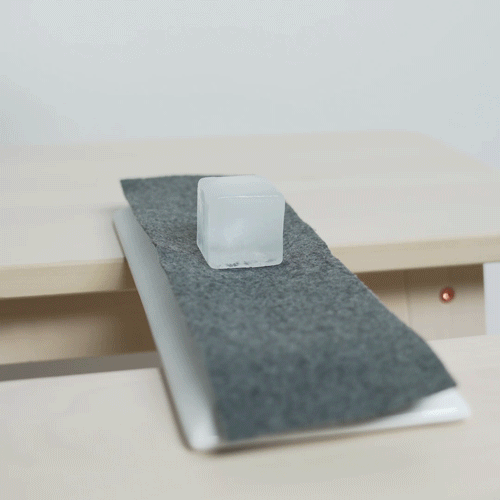The best science fair projects for 5th grade begin with a hypothesis -- a supposition or proposed explanation made with limited evidence as a starting point for further investigation. Below, we've included examples of hypotheses for each project idea. To make a truly awesome science fair project, make these your own and consider how you can explore these cool science demonstrations.
Don’t want the learning to stop? Check out our line of engineering kits that are perfect for 5th grade students.
Dry Ice Bubbles (Ages 5-16)
Dry ice, the solid form of carbon dioxide, is a super fun and accessible way to play around with the physics of cold materials. In this experiment, we use dry ice to create self-filling fog bubbles. See how big you can make your bubble, then pop it and watch the fog cascade across your table!
Science Fair Hypothesis ideas:
- If more dry ice results in more reactivity, then using more dry ice will cause a taller fog cascade.
Ingredients and step-by-step instructions: Dry Ice Bubbles
Magnetic Slime (Ages 9-16)
Polymers are really big molecules, made up of lots and lots of smaller molecules joined together. They can make materials bouncy like a rubber ball, stiff like a plastic toy, or stretchy like a piece of gum. One great way to play around with polymers — and to do some hands-on experimentation with chemistry in general — is to make your own slime. In this experiment, we uplevel your standard green goo to a jet-black magnetic version that will magically move and dance without you even touching it!
For some extra experimentation, try varying your ratio of iron oxide to glue to liquid starch and observe the results. Depending on your ratio, the slime can either be very thick or thin and it will interact differently with the magnets. What combination worked the best for you?
Science Fair Hypothesis ideas:
- A higher ratio of iron oxide will result in a stronger magnetic effect.
Ingredients and step-by-step instructions: Magnetic Slime
Thermal Powered Flower (Ages 9-16)
Have you ever seen hot air rise? In this project, explore the physics behind thermal air currents (hot air rising) by harnessing them to power your own spinning flower! Note that this project uses fire and paper, and should only be attempted with adult supervision. Happy spinning!
As the flames from each candle heat the air up around them, the air expands and becomes less dense than the surrounding, cooler air. This causes the heated air to rise upwards, creating a gentle, warm breeze that causes your flower to rotate just like a pinwheel spins in the wind!
Science Fair Hypothesis ideas:
- Higher heat will result in a faster spin.
- A spinning pinwheel will generate more power than a potato battery.
Ingredients and step-by-step instructions: Thermal Powered Flower
Ice Cube vs Wire
Can you cut through an ice cube with a piece of wire and a couple of weights? Find out with this simple science experiment!
Hint: It’s all about the quirky physics of water.
A weighted wire is going to cut through an ice cube, but somehow leave the ice cube whole after it passes through. This may sound like that magic trick where the assistant gets sawed in half, but there’s no magic about this! This happens because of another quirk of water physics called “regelation.” Ice melts into water because of pressure, but once that pressure is gone, any ice above or around it will cool it back down to freezing. Essentially, the ice refreezes itself shut behind the wire. As you watch this experiment happen, see if you can spot any difference between the ice behind the wire and the rest of the ice block.
Science Fair Hypothesis ideas:
- More weight on the wire will cut the block more quickly.
Ingredients and step-by-step instructions: Ice Cube vs Wire
